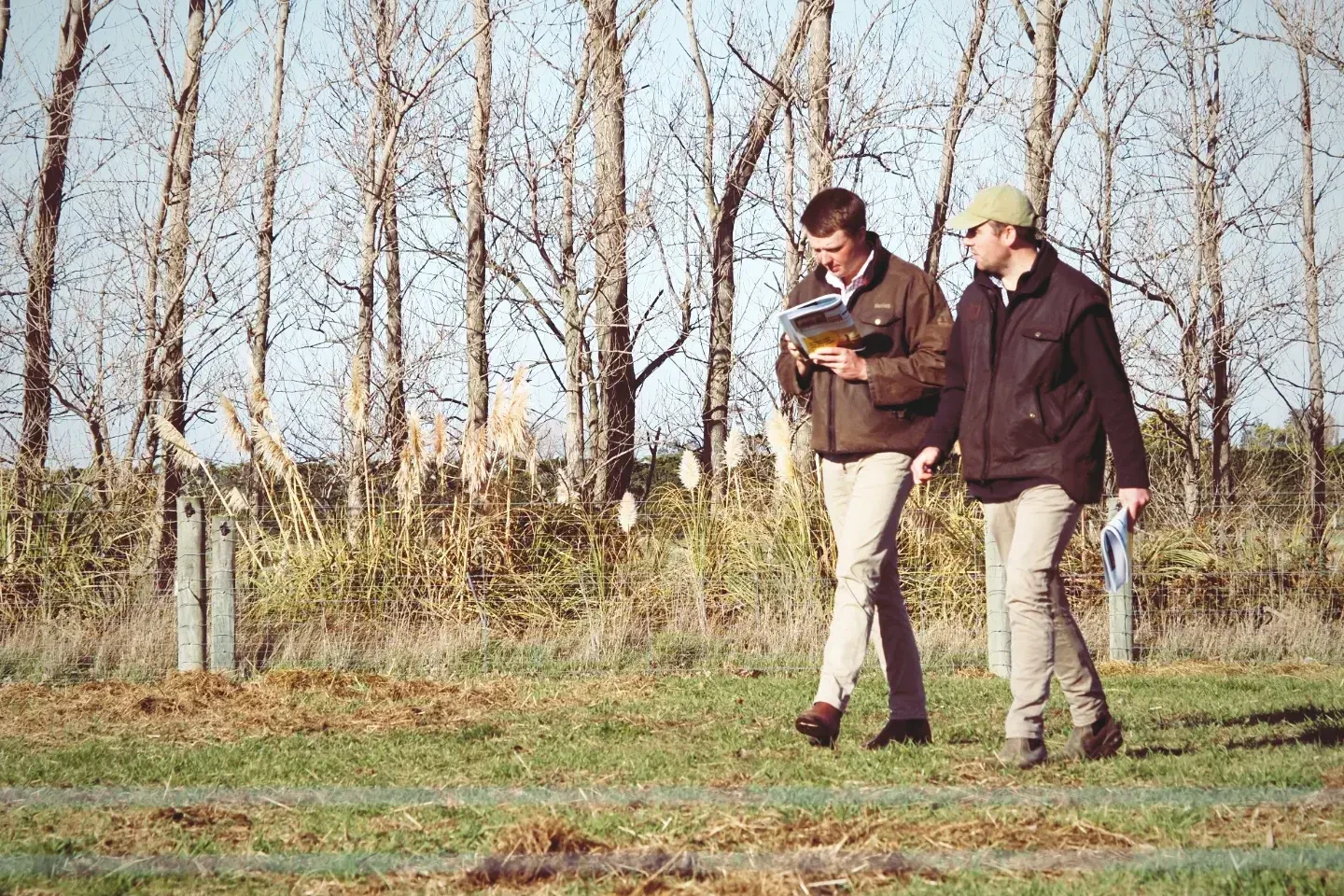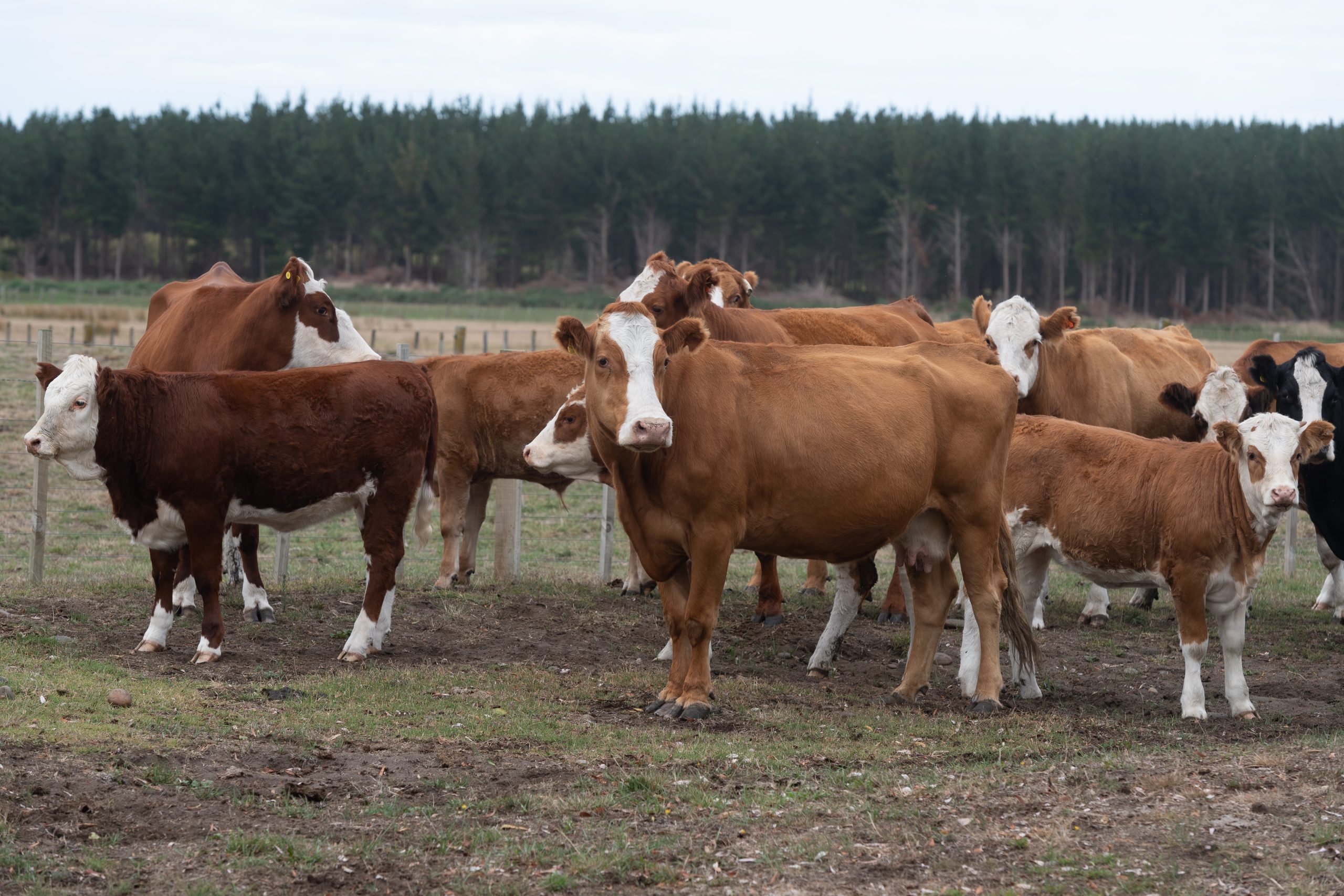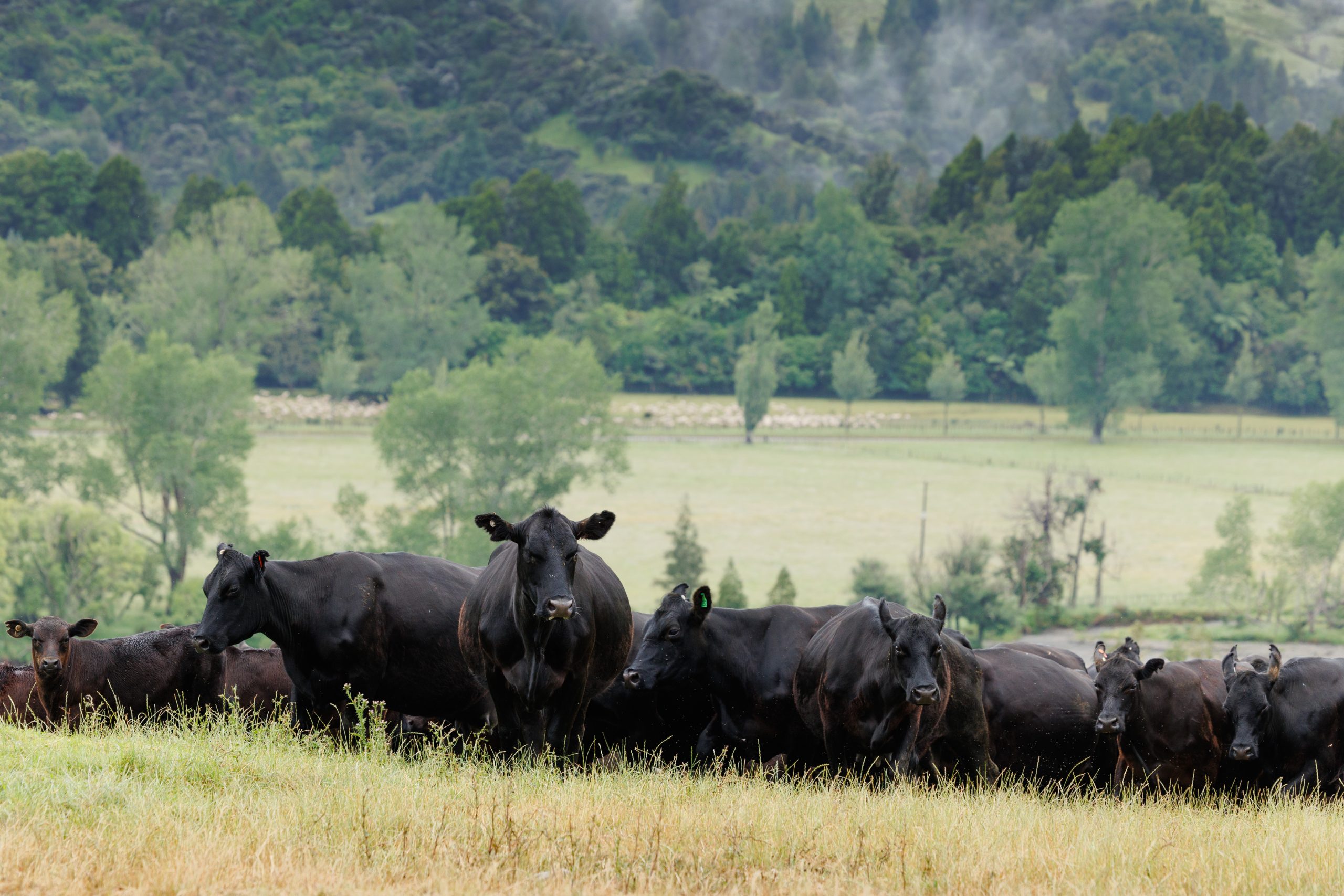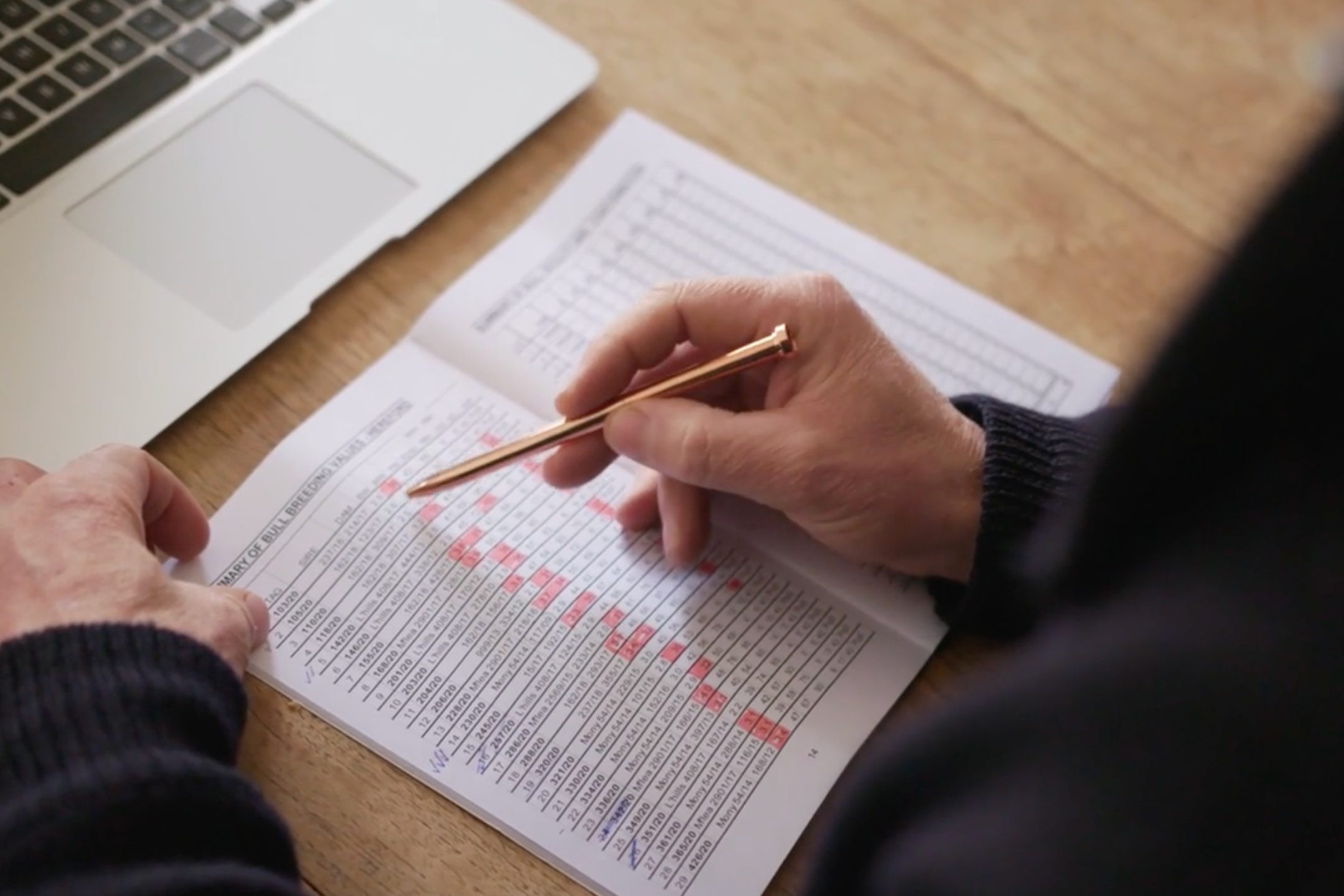Next Generation Herds fast-forward genetic gain
For Alan and Natasha Cave joining Informing New Zealand Beef’s commercial herd programme was a natural progression in their on-going work to improve the performance of their commercial beef herd. Words Sandra Taylor, Beef + Lamb New Zealand and Photos Laura Adams, Little Valley Photography.

Beef + Lamb New Zealand’s Informing New Zealand Beef (INZB) commercial herd programme, also known as Next Generation Herds, works with commercial farmers such as Alan and Natasha Cave to collect data on traits such as growth rates, calf docility scores, cow Body Condition Scores, foetal age at scanning, and reproductive performance. Participants can choose what specific traits to record, but are required to record birthdate or foetal age and genotyping for parentage.
Data from commercial herds can contribute to evaluations and provides data collection opportunities beyond those normally available in stud herds.
The Next Generation Herds programme allows information to be collected on maternal cow performance, under the conditions typical of a commercial herd, and carcase data on steers. It could also help bull breeders that work with commercial herds by providing more genomic information to more accurately select bulls and replacement heifers.
Data collection is nothing new for the Cave family. They have been single-sire mating and collecting data on their commercial Angus cows for over 30 years, so joining INZB’s Next Generation Herds just meant taking their recording to the next level.
The couple farm 396ha (350ha effective) at Mokauiti in the King Country. They have a good balance of hill and finishing country upon which they run 151 Angus breeding cows (which includes 30 stud cows) 42 heifers, 40 bulls, 25 R1 steers and 25 R2 steers alongside 1250 Romney Coopworth breeding ewes.
It was Alan’s parents who began recording the parentage of their commercial cows, so even before joining the Next Generation Herds programme, Alan and Natasha had a lot of information to work with.
Genetic gain has a huge part to play in the New Zealand beef industry and there is huge potential for improvement within commercial herds.
While the programme does require them to take even more measurements, Natasha says it has made them more aware of how to make better use of their numbers. The couple also saw joining INZB’s Next Generation Herds as an opportunity to help the beef industry – which they are both passionate about – succeed.
They believe genetic gain has a huge part to play in the New Zealand beef industry and there is huge potential for improvement within commercial herds. Natasha says stud breeders are currently doing all the lifting driving genetic gain and providing commercial farmers with the tools to achieve this within their own herds would be of huge benefit to the beef industry. “Yes, a cow still needs to be the whole package and you can’t forget about her phenotype and things like good feet etcetera; but genetic information gives us another tool-in-the-box to ensure we are choosing the best animals to continue to improve the performance of our herds into the future.”
The whole focus of the Cave’s commercial breeding programme is to produce cows that will rear a good calf year-after-year, irrespective of the climate. That calf should then have the genetic potential to allow it to be finished before it is two-years old; which is what Alan and Natasha have been achieving within their
farm system.

All of the couple’s breeding cows spend most of the year on hill country. After weaning, they are rotated around blocks before being set-stocked in July. From the end of July, the cows are run onto an oat crop on daily shifts. Every day the springers are identified, drafted out and put onto pasture for calving.
At calving, Alan and Natasha tag and weigh all calves, both commercial and stud animals. “I was weighing the stud calves anyway so we thought we might as well do both,” says Alan. Although recording birthweights isn’t a requirement of the programme, participating farmers are required to record an accurate foetal age at pregnancy scanning to within five-day increments.
After calving, the cows and calves are spread over the farm either rotating around the hills or following ewes and lambs around the easier country.
Weaning typically takes place in early March, earlier if it’s particularly dry. Both cows and calves are weighed at weaning and the cows are Body Condition Scored.The couple input all their data into a Stockbook programme as well as the hardcopy record book that was started by Alan’s parents. Natasha says their record keeping hasn’t changed much since joining Next Generation Herds, the big difference is that they now have a third party to pass the information on to.
Artificial breeding
Even before joining Next Generation Herds, the Caves started artificially inseminating a small number of commercial cows to speed up genetic gain.
Coming from a dairy farming background, Natasha knew the benefits of artificial breeding and was keen to use the technology in their beef operation. In the first year, they artificially inseminated (AIed) 15 cows and doubled this number in 2022. In 2023, they AIed 40 cows. Alan and Natasha have been using American, Australian and some NZ genetics in their AI programme and so far, they have been pleased with the results. “When you get it right you know it’s been a good move,” says Alan.
He says it is important to do the background research before investing in genetics and have an in-depth understanding of EBVs.
From their experience with their stud, they have found different lines of cows may not do so well when mated with different lines of bulls. It’s just about finding the right mix.
Stud breeders are currently doing all the heavy lifting driving genetic gain and providing commercial farmers with the tools to achieve this within their own herds would be of huge benefit to the beef industry.
The biggest challenge they have had with AI is finding a cycle synchronisation product that suits their beef cows, but they think they have finally found one that suits. This year they had a pleasing 66% in-calf rate through AI which is their best result ever. Alan recommends any beef farmer considering undertaking an AI programme seek advice from someone who has had experience with AIing beef. “They are very different to dairy cows. They are completely different beasts and don’t function the same.”
While they were collecting parentage and performance data in their commercial cows long before joining Next Generation Herds, they are now able to pass their information on to Beef + Lamb New Zealand Genetics to be used in the development of EBVs.
Alan and Natasha are also hoping that the extra information they are gathering through Next Generation Herds will be useful, particularly when it comes to selecting replacement heifers. Natasha says they already carefully evaluate their heifers before selecting their replacements, considering their temperament and conformation, birthweight, weaning weight and parentage.
All of their breeding cows have been DNA tested and they have also been testing all retained progeny as part of the Next Generation Herd programme.
Stud breeders
Alan and Natasha were struggling to afford the bulls that would give them the genetic gain they wanted, so set up their own Rotowai stud with the aim of breeding good affordable bulls for commercial beef breeders. This drive for genetic gain was also the reason they implemented an AI programme in their commercial herd.
Over the years they have used Heather Dell, Hallmark, Waitewhena and Stokman genetics and now use their own bulls across their commercial herd. They sell yearling bulls by private treaty.
Technology
To make wintering easier, every breeding cow has recently been fitted with a Halter collar. While only early days, Alan and Natasha are hoping the technology will allow them to better manage their feed, particularly during winter.
Next Generation Herds
Alan and Natasha are one of 21 commercial farmers in the Next Generation Herds programme with another 15 joining this year. They are seen as a critical part of INZB as the data they collect will ultimately contribute to the development of NZ-specific breeding values. Participating farmers are given full training on recording traits and collecting data.






